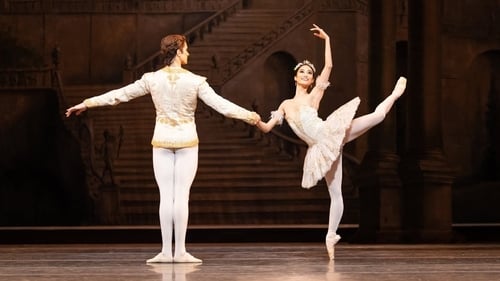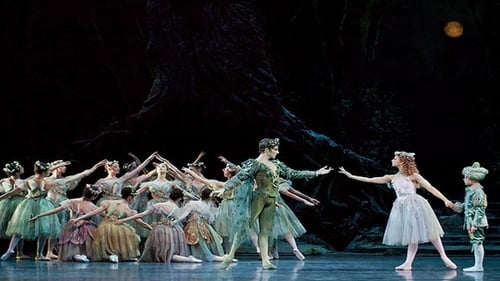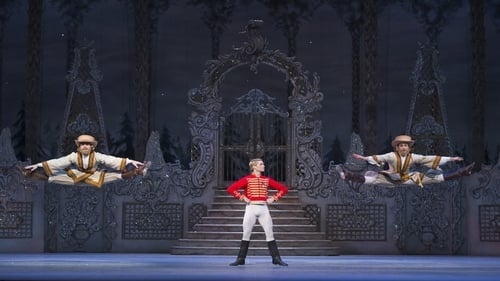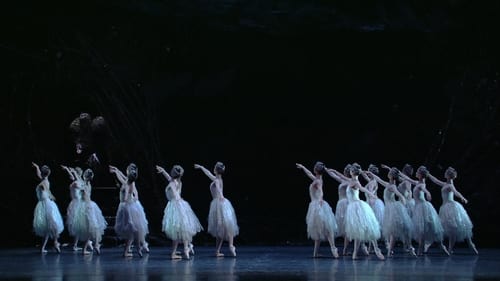
Fairy of The Golden Vine
Viaja con el Royal Ballet a un mundo encantado de princesas y hadas madrinas en la histórica producción de Marius Petipa con música de Tchaikovski. Esta producción de la Bella Durmiente lleva deleitando al público de Covent Garden desde 1946. Un clásico del ballet ruso que coronó al Royal Ballet en su nueva sede, tras la Segunda Guerra Mundial, como gran compañía a nivel mundial. Sesenta años después, en 2006, se ha rescatado la puesta en escena original, volviendo a los magníficos diseños de Oliver Messel y a los deslumbrantes trajes. La gran partitura de Pyotr Il’Yich Tchaikovski y la coreografía original de Marius Petipa combinan a la perfección con las variaciones creadas para The Royal Ballet por Frederick Ashton, Anthony Dowell y Christopher Wheeldon. Un ballet que hechiza a todo aquel que lo ve.

Shade
Set in the Royal India of the past, La Bayadère is a story of eternal love, mystery, fate, vengeance, and justice. The ballet relates the drama of a temple dancer (bayadère), Nikiya, who is loved by Solor, a noble warrior. She is also loved by the High Brahmin, but does not love him in return, as she does Solor.

Dancer
The Dream: Frederick Ashton’s delightful interpretation of Shakespeare’s A Midsummer Night’s Dream is a classic of The Royal Ballet’s repertory. Symphonic Variations: Ashton was inspired to create a ballet on the four seasons – but as he began to choreograph he refined and purified until the ballet shook off its original meaning, emerging as an abstract celebration of movement and physicality. Marguerite and Armand: Marguerite, a Parisian courtesan, lies on her deathbed. She recalls her tragic love affair with Armand in a series of feverish flashbacks.

Fairy of the Crystal Fountain
The Sleeping Beauty holds a special place in The Royal Ballet’s repertory. It was the ballet with which the Company reopened the Royal Opera House in 1946 after World War II, its first production at its new home in Covent Garden. Margot Fonteyn danced the role of the beautiful Princess Aurora in the first performance, with Robert Helpmann as Prince Florimund. Sixty years later, in 2006, the original 1946 staging was revived by then Director of The Royal Ballet Monica Mason and Christopher Newton, returning Oliver Messel’s wonderful designs and glittering costumes to the stage.

Rose Fairy
The young Clara creeps downstairs on Christmas Eve to play with her favourite present – a Nutcracker. But the mysterious magician Drosselmeyer is waiting to sweep her off on a magical adventure. After defeating the Mouse King, the Nutcracker and Clara travel through the Land of Snow to the Kingdom of Sweets, where the Sugar Plum Fairy treats them to a wonderful display of dances. Back home, Clara thinks she must have been dreaming – but doesn’t she recognize Drosselmeyer’s nephew?

Pas de six
The peasant girl Giselle discovers the true identity of her lover Albrecht – and that he is promised to another. Giselle kills herself. Her soul enters the ranks of the Wilis – shades of young women who died before their wedding day. All men that come across their path are compelled to dance themselves to death, and Albrecht falls into their trap. Giselle’s intercession saves Albrecht and releases her soul from the Wilis’ power.

Kitri's friend
Carlos Acosta's first venture directing one of ballet's 19th century classics was eagerly anticipated, as was his own starring role in the production (as Basilio), opposite the Argentinian Royal Ballet principal Marianella Nuñez (Kitri). Still built on Petipa's original choreography, Acosta's clear dramatic structure and vivid stage action gave the ‘boy gets girl despite her father’ story a more convincing air than usual, with Don Quixote's parallel obsession with Dulcinea-Kitri coherently woven into the plot.

This special program, performed at the Royal Opera House to mark the 25th anniversary of Frederick Ashton's death, presents five works that showcase his astonishing versatility, from compelling abstract ballets - such as the exuberant Voices of Spring and the radically modernist Monotones - to the tragic love story Marguerite and Armand, brought to life with 'performances of heart-wrenching intensity' (The Observer) by Tamara Rojo and Sergei Polunin.

"MacMillan's vision has been vital in shaping The Royal Ballet's style and repertory, and what better way to appreciate his art than with this rare chance to experience three contrasting works in a single performance. Abstract, dramatic, humorous - this programme gives a wonderfully varied introduction not just to MacMillan's work but to the beauty and dramatic power of ballet itself. Concerto, to Shostakovich's Second Piano Concerto, contrasts moments of exuberance and elegiac reflection. The Judas Tree places a single woman among 13 men to enact a harrowing event that is recognizably contemporary but with biblical overtones. Elite Syncopations completes the programme with a sparkling evocation of a dance hall that brings ragtime rhythms to the dance, and a ragtime band to the stage.

Pas de trois
Yolanda Sonnabend's Faberge'-inspired designs evoke a world of Imperial Russia in Anthony Dowell's acclaimed production for The Royal Ballet of 'Swan Lake', one of the world's best-loved ballets. Marianela Nunez as Odette/Odile and Thiago Soares as Prince Siegfried bring new vitality to a compelling story of tragic romance. Valeriy Ovsyanikov conducts the Orchestra of the Royal Opera House in Tchaikovsky's glorious romantic score.









